► BMW’s new M5 PHEV saloon driven
► 717bhp V8 and a claimed 42-mile range
► Does huge 2435kg kerb weight ruin the handling?
Forty years have passed since the first M5 rolled out of BMW M’s Garching plant, and the super-saloon’s engine bay has been home to all kinds of engines in that time. Six, eight and 10-cylinder motors have all taken turns at giving the 5-series saloon near-supercar performance, but this year the M5 gets hybrid power for the first time.
Adding a plug-in power pack to M’s 4.4-liter V8 dramatically improves the power and torque outputs, as well as giving the M5 the ability to drive solely on electric power. But the conversion adds hundreds of kilos, making the M5 even heavier than an X5 xDrive50e plug-in SUV.
At a glance
Pros: Huge pace, ride, feels lighter than it is, PHEV tax advantages
Cons: Heavy, slower off the line, doesn’t sound sexy
What’s new?
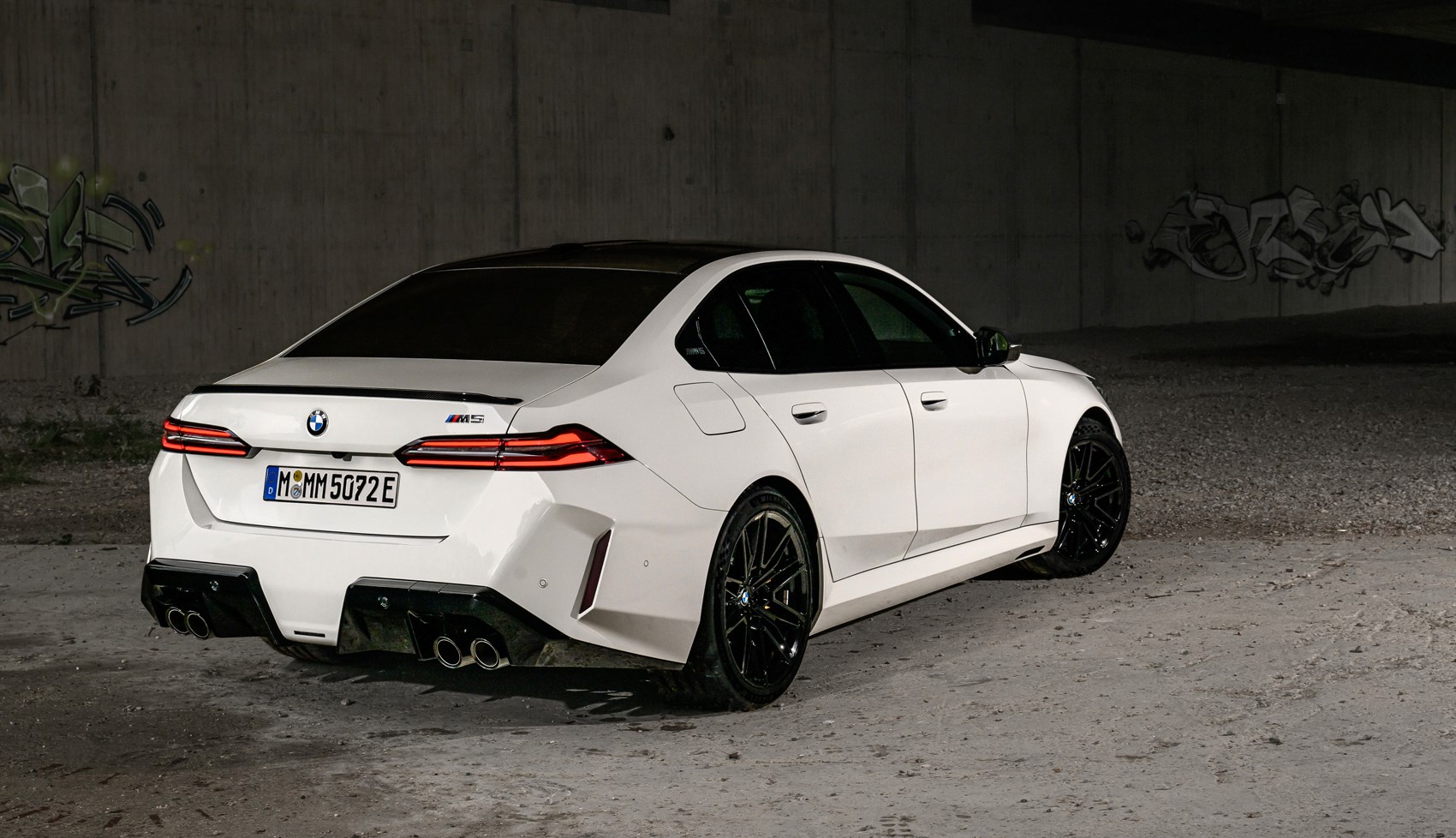
The G90 M5 is all-new, based around the latest G60 5-series and its i5 electric counterpart introduced in 2023. The promise of crushing performance and luxury-car refinement is broadly the same as before, but the seventh-generation M5 stands out from its immediate predecessor in three ways.
The first is the availability of a Touring body style, something BMW has only offered twice before, on the 1990s E34 and 2000s E61, and which has been absent from the M5 configurator in the UK since 2010. We’ll be driving and reporting back on the wagon in a couple of weeks.
Another change is the addition of flared rear arches, a well-known M2 and M3 calling card, but always absent on their big brother. They give the longest-running M car a more muscular look, without going OTT, making it easier to spot the M5 from a regular 5-series decked out in M Sport clobber, and allowing M’s engineers to widen the rear track for improved stability.
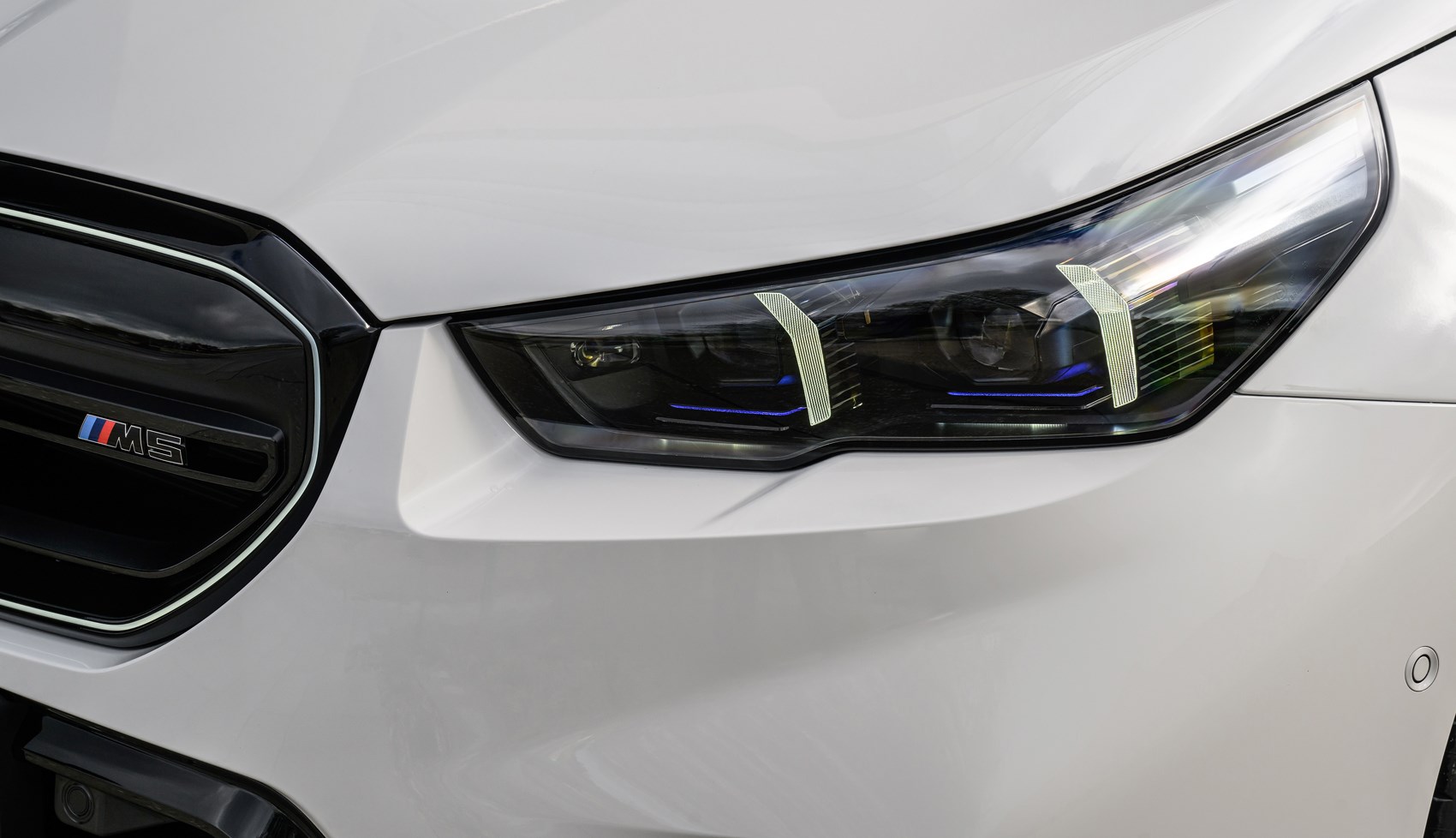
But the big news is that hybrid drivetrain. BMW decided against using plug-in tech to downsize the M5 from a V8 to a straight-six, retaining the 4.4-liter combustion engine and four-wheel drive, and adding a single motor inside the eight-speed automatic transmission.
What are the specs?
The old M5’s V8 made 617bhp but the new car’s combustion engine only generates 577bhp – although it does at least make the same 553lb ft of torque. But factoring in the electric hit more than puts the G90 back in front. Its electric motor generates 194bhp and 207lb ft, though pre-stage gearing amplifies the available torque to 332lb ft. The result is a total system output of 717bhp and 738lb ft.
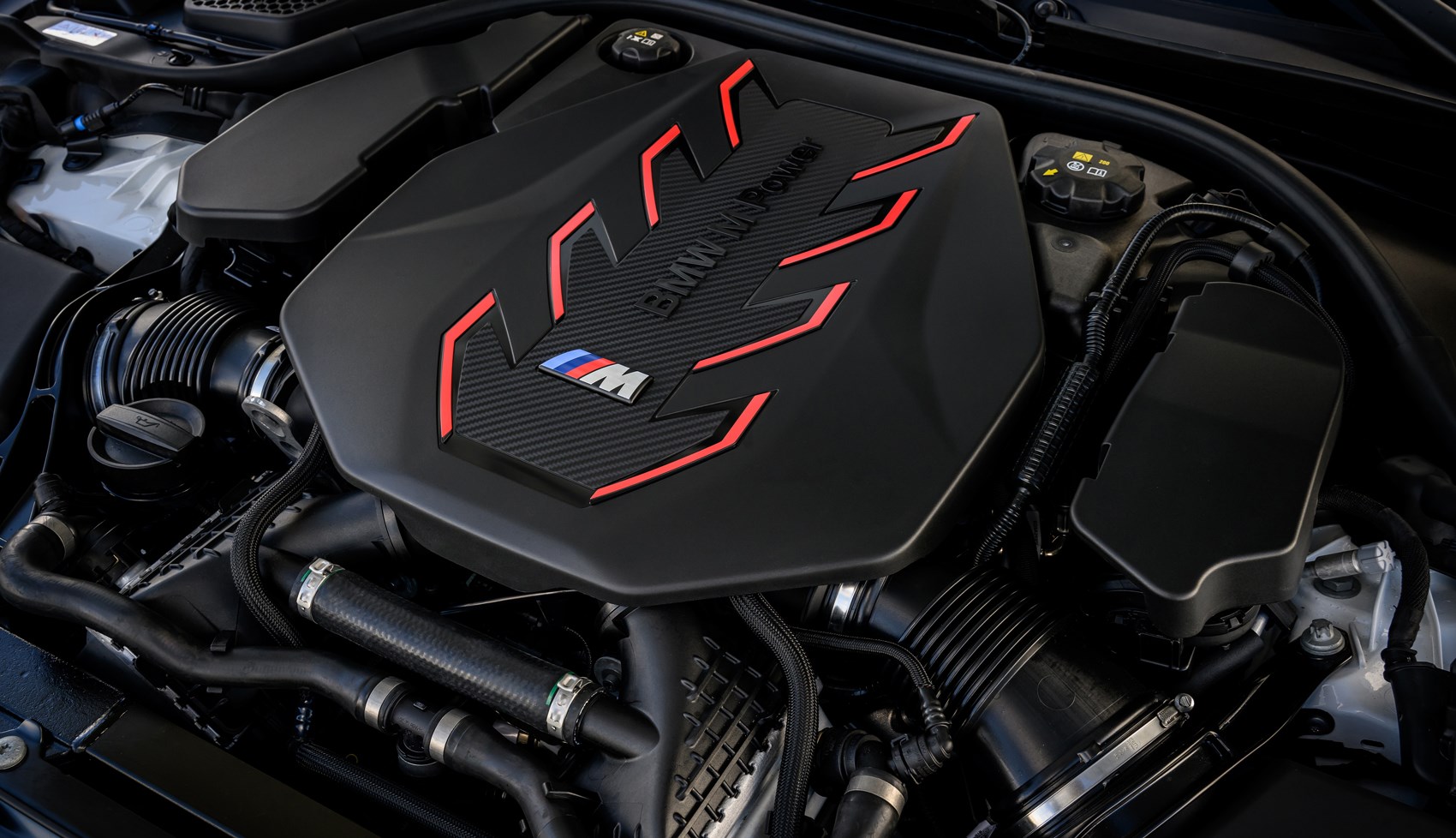
But adding hybrid power also balloons the kerb weight to 2435kg – the last M5 weighed 1895kg. The new model’s power to weight ratio is worse, despite the 100 extra horses, and so is the 0-62mph time, which lengthens from 3.3 to 3.5 seconds. But the torque to weight ratio is better this time and BMW claims the new M5 is even faster in overtaking situations.
The 18.6kWh hybrid battery located under the rear footwell gives a WLTP claimed range of 42 miles. That’s not quite up there with the 60 miles claimed for the 550e xDrive, but it’s better than the 8 miles promised by AMG’s C63 PHEV. And it also gives the M5 a CO2 rating 37g/km, equating to more money in the pocket of UK company car drivers.
How does it drive?
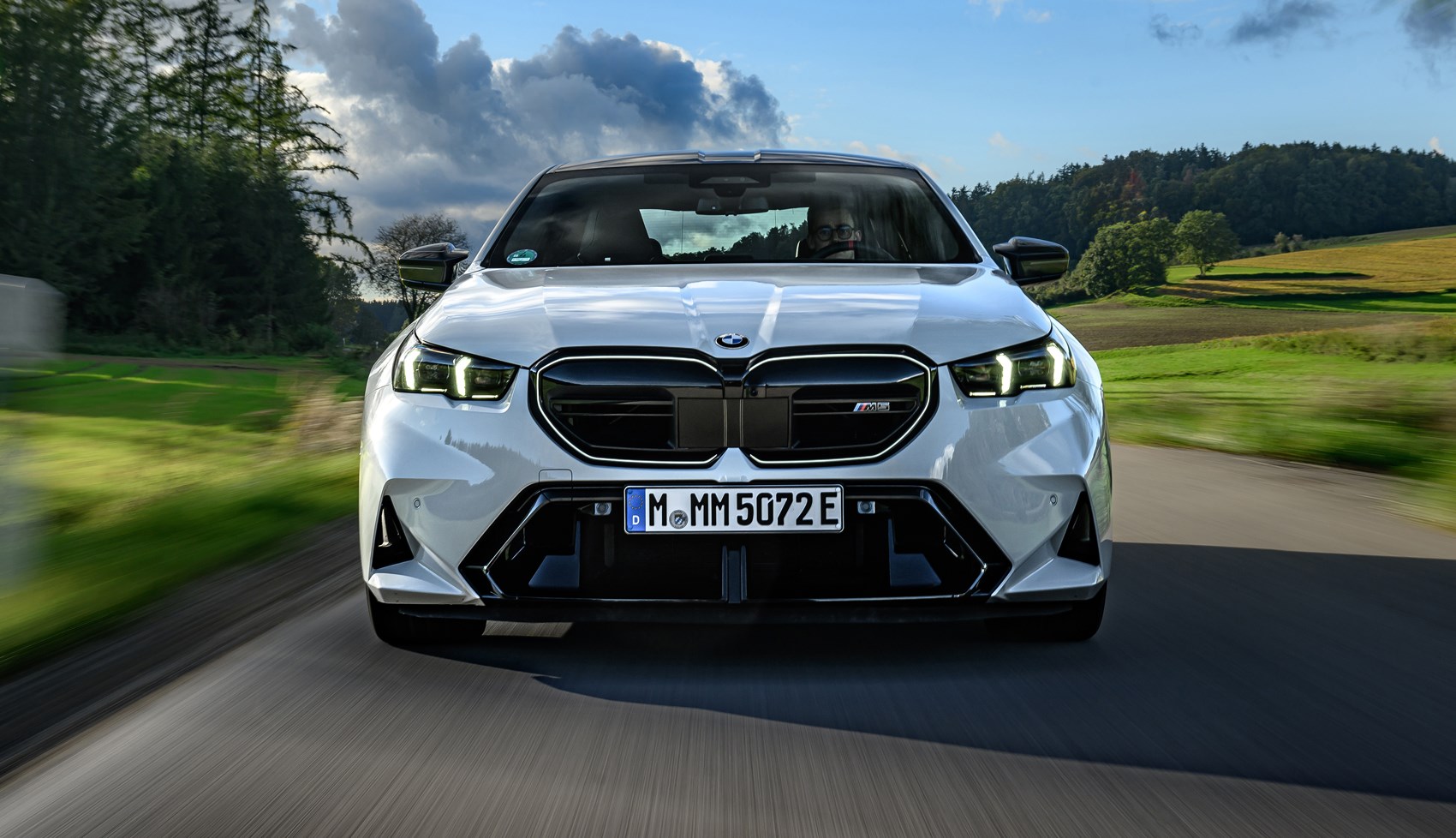
Don’t get too hung up on what the scales and stopwatch say. I didn’t, because the new M5 feels much lighter and much faster than the spec sheet would have you believe. Performance first: urge in pure EV mode is adequate for keeping up with traffic and no more. But mated with the V8 the system delivers crushing mid-range acceleration, which is far more important than the off-the-line kick. Not that it feels exactly slow there, either. BMW says the overtaking stats prove the heavyweight is now faster in real on-road driving, and that’s exactly how it felt to us.
Electric power doesn’t only push you deeper into your seat, it starts that push sooner, masking turbo lag from the combustion engine. One long pull on the left-hand shift paddle (marked Boost) primes the entire system to deliver maximum thrust. It’s total overkill, but totally addictive.
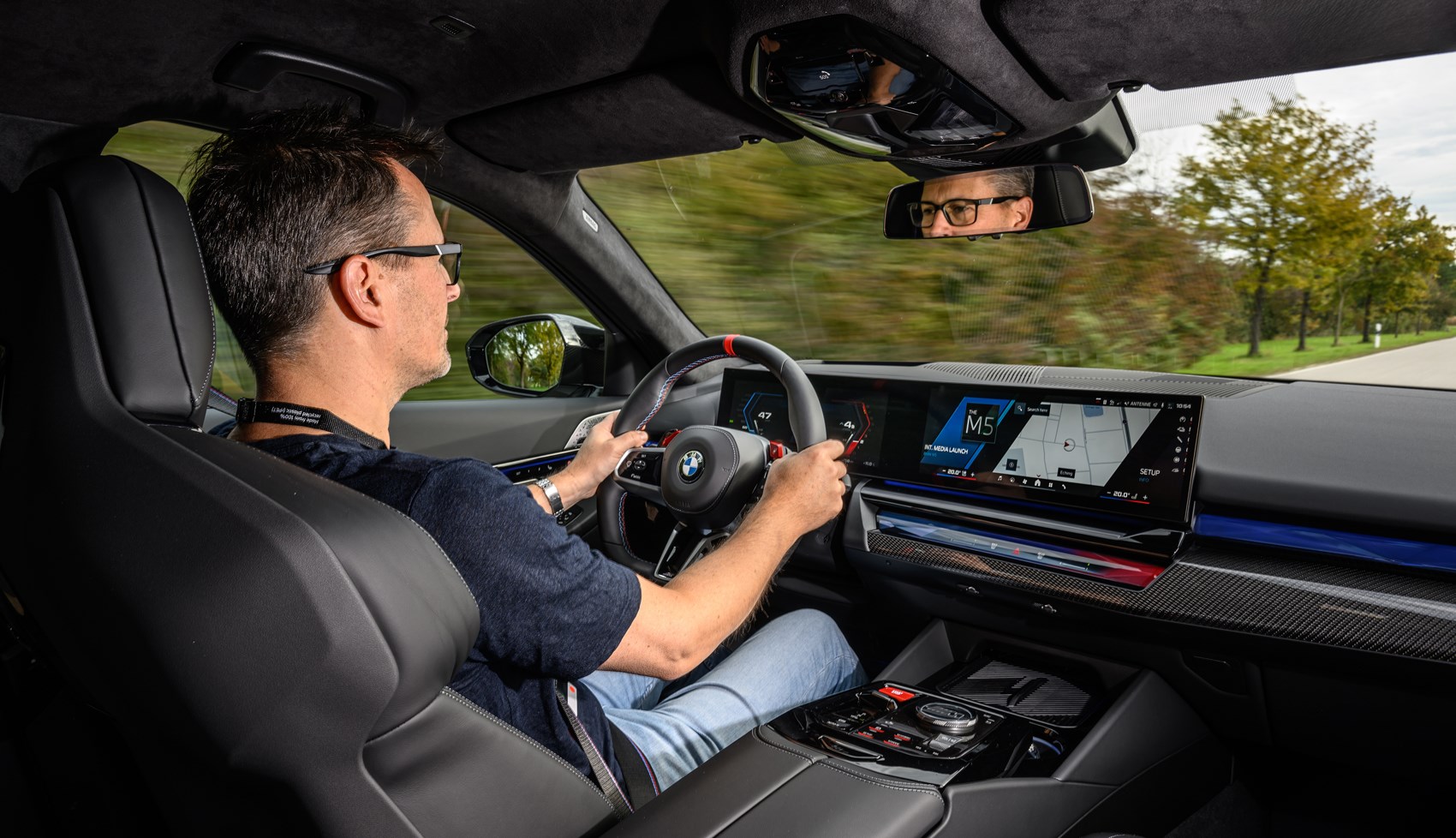
I just wish the engine sounded a little more musical. M engineers have fitted a crossover exhaust manifold to boost response and give the 4.4 a harder-edged character, like a supercar’s flat-plane crank V8. But it sounds harsh, and is overlaid by a boomy synthesised engine noise coming through the speakers that can be turned off via toggling one of the umpteen digital buttons that also control the engine and chassis.
With everything in Comfort mode the M5 rides well on most surfaces, and doesn’t feel lardy. A variable-ratio steering rack and rear-axle steering make their debut, and M has done a great job of integrating them in such a way that they deliver a natural handling feel.
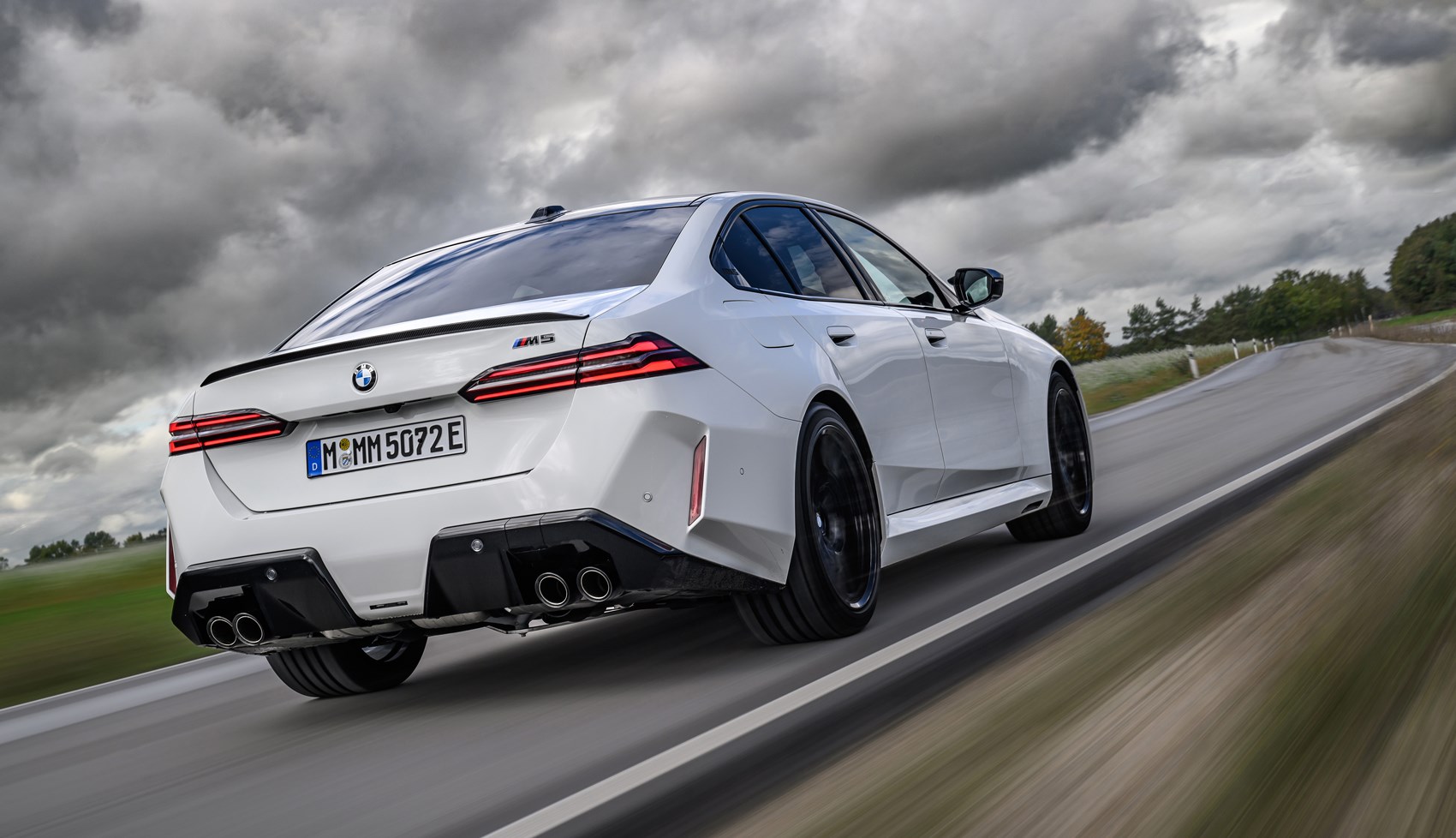
The M5’s nose dives into corners quickly, and that response is backed up by excellent front-end bite. Front-end stability is matched at the rear by strong traction and a safe balance in the default all-wheel drive mode, but I found switching to 4WD Sport, which sends more torque to the rear, more fun on the kind of tight twisty roads where the M5’s weight and size are more apparent. And of those it’s the size, not the weight, that you’re more aware of. At 1970mm wide the M5 doesn’t exactly spill out of its lane, but it also doesn’t leave you much spare room.
What’s the interior like?
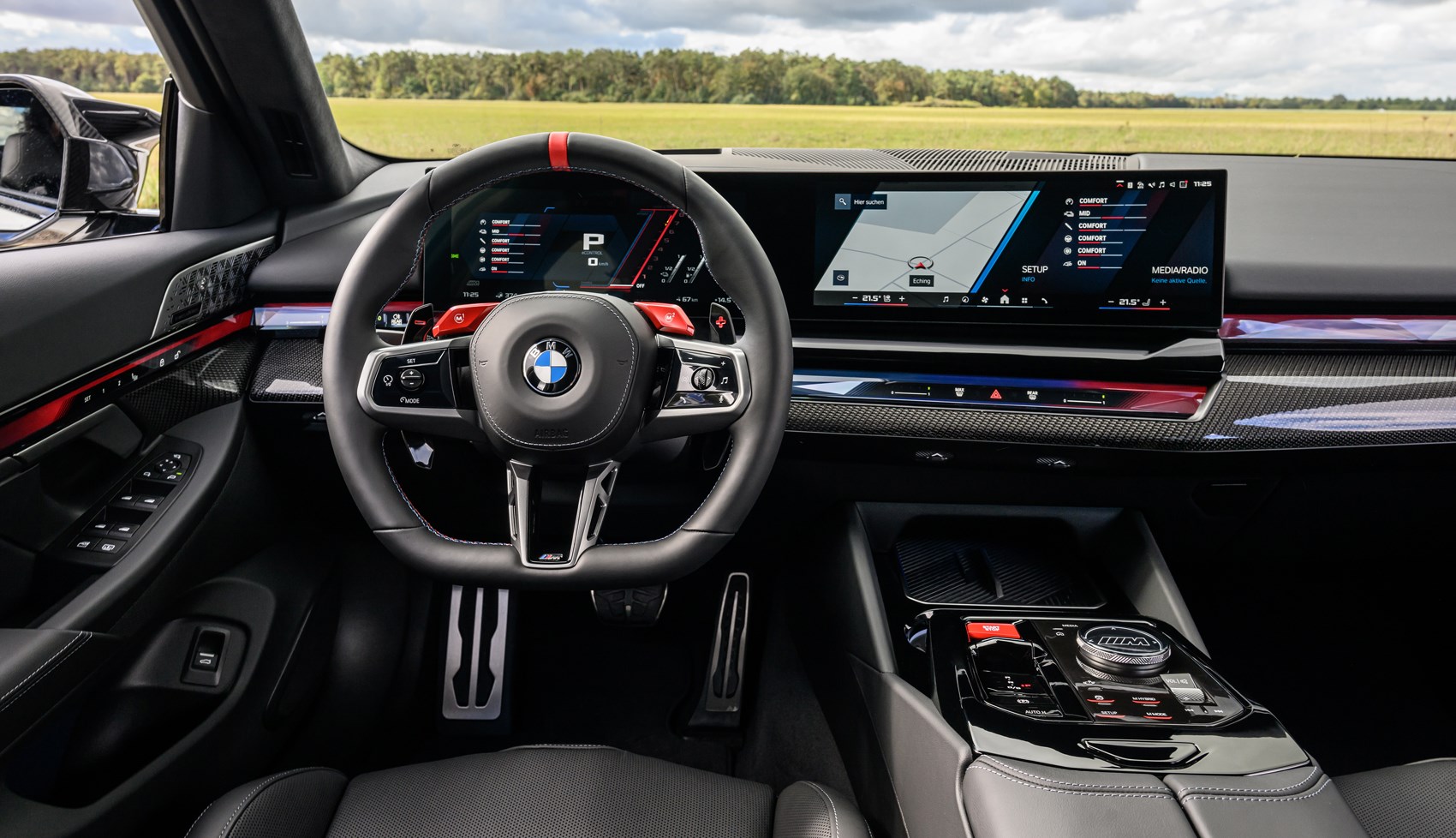
Going fast is only half of the M5’s remit. It’s also got to cut it as a proper luxury saloon, and it does a great job. The front-sports seats strike a fine balance between comfort and support, the driving position adjusts to fit all but the most misshapen bodies and the build quality is excellent.
Like almost all modern BMWs the M5’s dashboard is dominated by a long, curved screen that combines a digital instrument pack and central touchscreen. It looks bright, feels responsive and is mostly intuitive. And because the 5-series is aimed at an older crowd, you still get a circular iDrive dial on the console, in this case featuring the M logo.
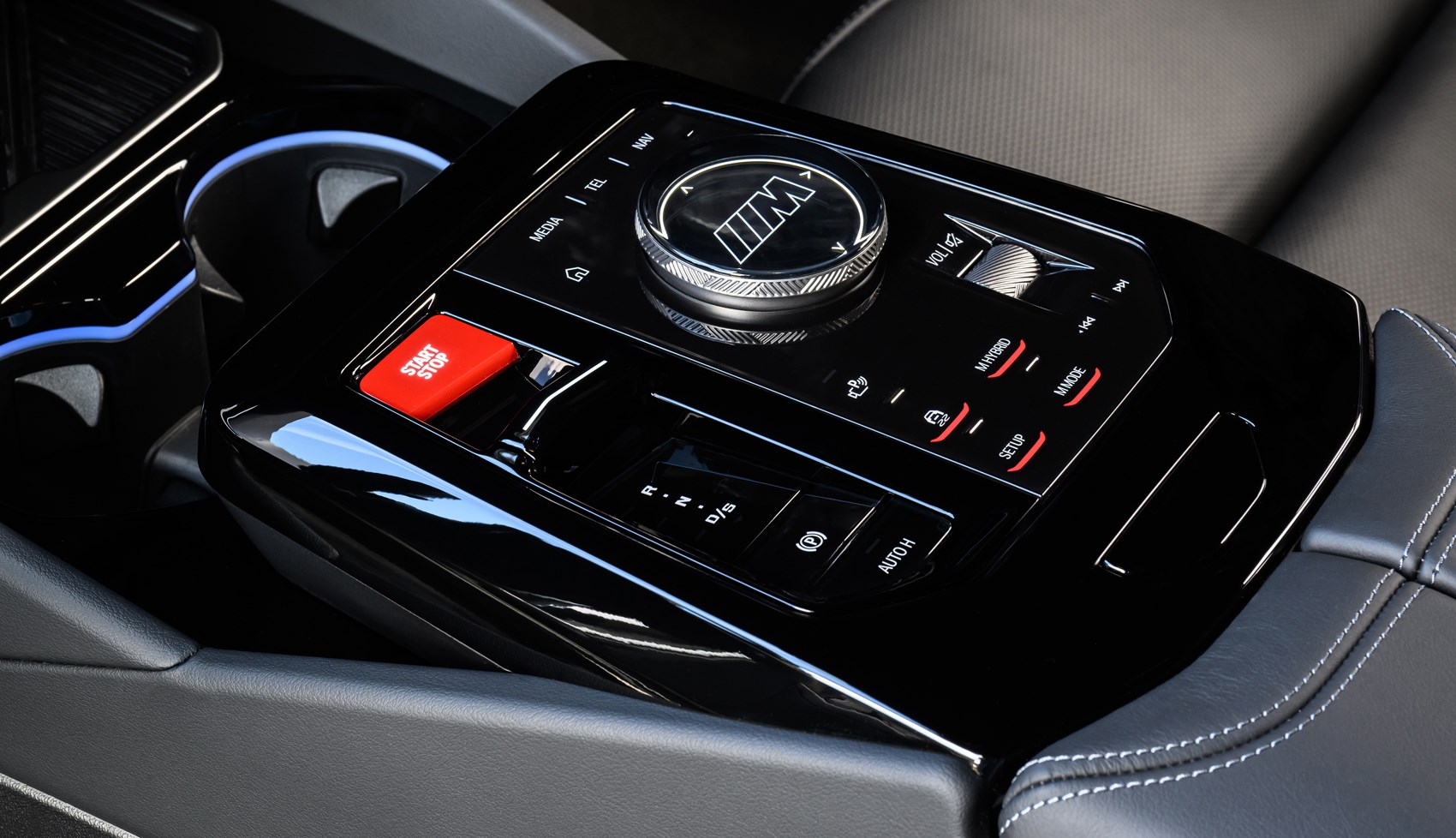
Other reminders that you’re driving the M hero come in the form of a red starter button, fat, flat-bottom steering wheel and two buttons marked M1 and M2 on the top of the wheel to save your favourite engine and chassis settings. I recommend setting up M1 with sport dampers, sport brake response, and 4WD Sport, and M2 with rear-wheel drive and ESC off for moments of lunacy. Including the default all-comfort setup that gives you three different M5 characters.
Before you buy
The old M5 was available in some markets in both base and Competition trim, but the new car replaces both of those. Not 2023’s hardcore CS, though; we can expect BMW to come up with a successor to that in a couple of years. So your only big choice for now is whether to go for the saloon or Touring body. The booted car costs £111,405 in the UK, and the wagon £113,405, so there’s not much in it.
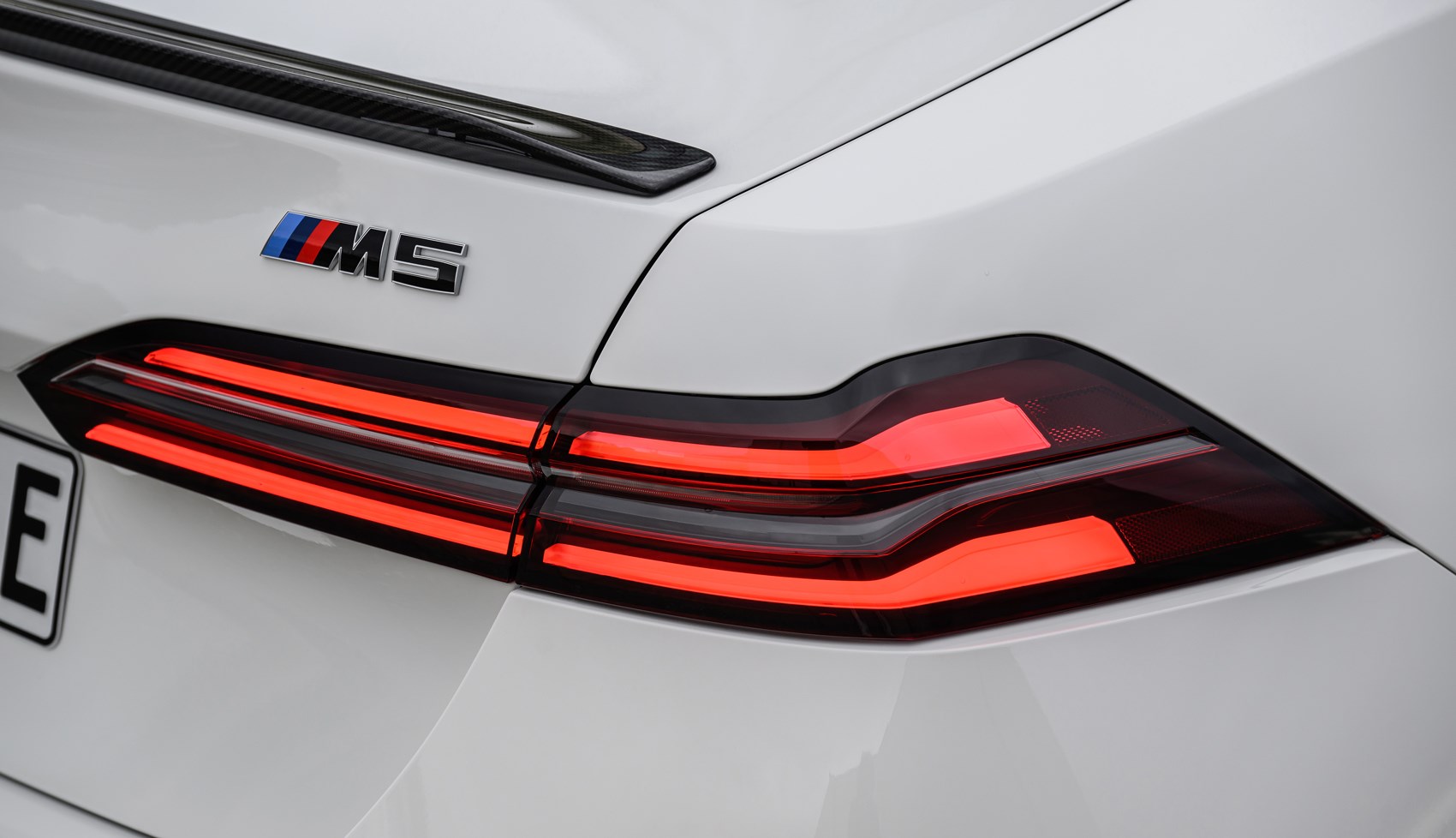
When it comes to rivals, things look good for the M5, for now. Audi’s £119,775 non-hybrid RS7 Sportback is getting on and costs more to buy and to run. It also only makes 621bhp, though it does get to 62mph in 3.4 seconds, a tenth ahead of the BMW. And Mercedes-AMG hasn’t released its new E63 yet. The 63 is also going the plug-in route, but it’s downsizing from eight to six cylinders, rumours say.
Verdict: BMW M5 saloon
We’ve always tried to champion lighter cars, so I was ready to hate the new M5. But I can’t. It disguises its bulk well and is exciting to drive for all the right reasons, while also offering big financial benefits to UK company car drivers and helping BMW meet its CO2 obligations. I wish it sounded sexier, but the main reason I’d recommend holding off on buying the M5 is the availability of the Touring version. We have a feeling that’ll be an even better package and we’ll get to find out soon.